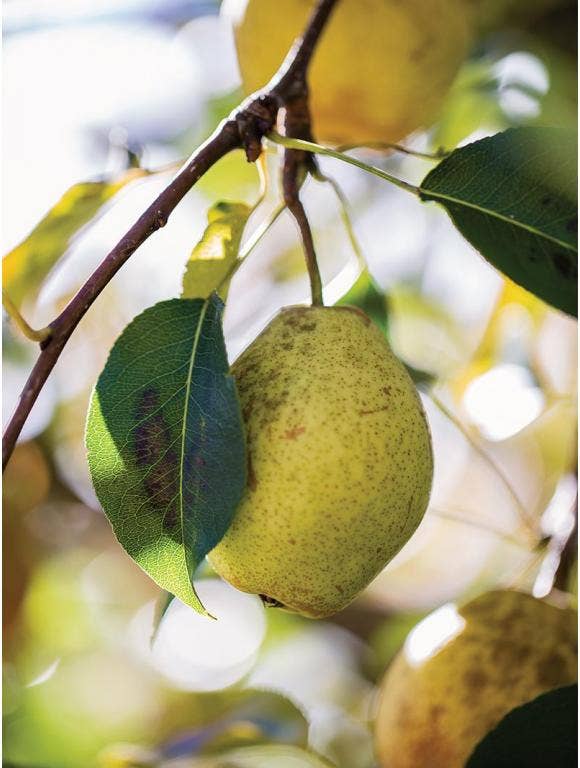
Whether you garden outdoors or indoors, have lots of extra space or just a few square feet, growing fruit trees is a rewarding endeavor. Here's what you need to know about fruit trees to plant in the spring as well as tips on how to successfully grow them in both warm and cold climates.


Choose the Right Tree for Your Climate
The first step to successfully growing fruit trees at home is to identify your climate and hardiness zone. Some fruit trees, such as citrus, prefer warmer temperatures with a long growing season and plenty of full sun, while trees such as apples prefer cooler temperatures and a pronounced dormancy period. Though it's possible to grow trees outside their preferred climate and hardiness range, it can lead to several complications and is best avoided. Fruit trees can roughly be divided into two groupings: cold climate trees (zones 1-8) and warm climate trees (zones 9-13).
Fruit trees for cold climates include:
- Apple
- Cherry
- Plum
- Peach
- Nectarine
Fruit trees for warm climates include:
- Citrus
- Olive
- Fig
- Avocado
- Pomegranate
Can You Plant Fruit Trees in Spring?
If you're looking for fruit trees to plant in the spring, you're in luck! Many cold climate fruit trees are available to plant in early spring as bare-root plants. Bare-root trees are sold as small, dormant trees removed from the soil and kept at temperatures below 40 degrees Fahrenheit. Planting cold climate selections in spring gives young trees a full growing season to send their roots into the soil and acclimate to their new home without running the risk of mid-season planting shock. For warm climate fruit trees, planting during the cooler months of fall and spring will give young trees an opportunity to become established without potential setbacks from extreme heat or cold.
How to Plant Fruit Trees
To plant fruit trees, dig a hole about twice the size of the tree's root ball and place the new tree within. Position the tree so the soil level of the tree is equal to that of the surrounding soil and be careful not to bury the tree's base. Once in place, water thoroughly and add more soil as necessary to fill in any gaps that might have occurred after watering. Adding an organic fertilizer with probiotic fungi and bacteria will assist the young tree in getting established.
Dwarf vs. Full-Size Fruit Trees
Through traditional breeding practices and grafting techniques (joining two cultivars together as one plant), even naturally large fruit trees can be grown in smaller yards or indoors. Before purchasing any new trees, determine whether you'll need dwarf or standard-sized trees by identifying how much space you have available. Good locations will provide full sun (eight or more hours per day), lots of air circulation and room to allow trees to extend their branches. Dwarf trees need less room, while full-size trees need more space. Many dwarf trees can also be planted in pots.
Fruit trees require some time to mature before being able to successfully bloom and set fruit. An apple tree grown from seed, for example, can take eight to 10 years or more to mature and set fruit for the first time! Grafted plants, on the other hand, are fully matured clones that will only require as few as two years to become established and produce their first crop.


Potted Fruit Trees
Many smaller fruit trees can be grown in pots both indoors and outdoors. Dwarf evergreen fruit trees such as the 'Improved Meyer' lemon, 'Bearss' lime and even olive trees make excellent houseplants when given plenty of extra light and warmth. Adding LED lighting can help boost plant vigor and eventual fruit production.
Potted trees can benefit from being moved outdoors during warmer months and then returned indoors the following autumn. However, to prevent sunburning leaves, avoid placing these trees directly in the sun when brought outside. And give the trees time to acclimate by moving them to an intermediate location for one to two weeks.
Deciduous fruit trees are healthiest when they're allowed to go through a dormancy period. In cooler regions where freezing temperatures are common, warm climate potted fruit trees should be brought indoors and cold-hardy ones should be moved to a protected spot outside. Once all leaves have dropped, you can store the trees in a dark location where temperatures remain above freezing but below 40 degrees F. Throughout this period, maintain the soil moisture and check it regularly to avoid drying out. After the risk of freezing has passed, you can bring the trees outdoors once again.
Fruit Tree Pollination
For proper pollination, most fruit trees require pollinators. Outdoors, this is accomplished by pollinating insects — predominantly bees but also moths, wasps and flies. To boost polliators in the area, plant multiple species of flowers of various sizes and bloom times. Spring bulbs like daffodils and crocuses lure early pollinators while summer bloomers like dill, borage, Agastache and nepeta keep them around throughout the season.
Due to a lack of pollinators, some indoor fruit trees will need to be pollinated by hand to bear fruit. For best results, use a paintbrush to pick up pollen from fully opened flowers and transfer it to other fully opened receptive flowers. Flower and fruit drop is common indoors but can be alleviated with additional lighting, warmth and fertilizers.
Planting fruit trees requires a bit of planning and patience but is ultimately rewarding when you can pick ripe fruit directly from the tree.
For a wide variety of fruit trees to choose from, check out the Burpee catalog.



